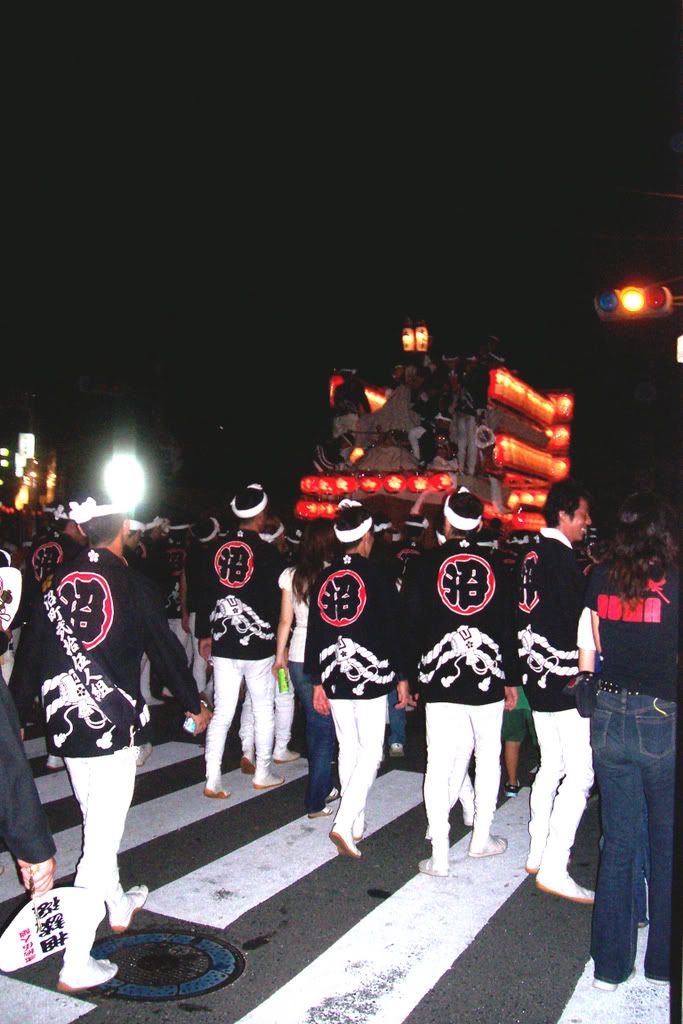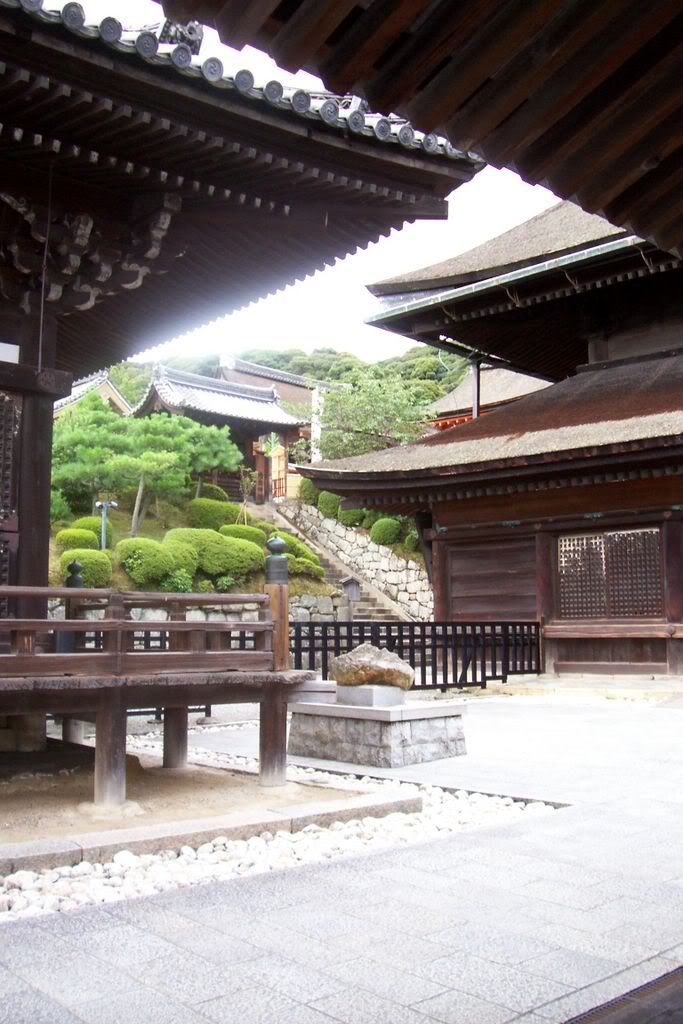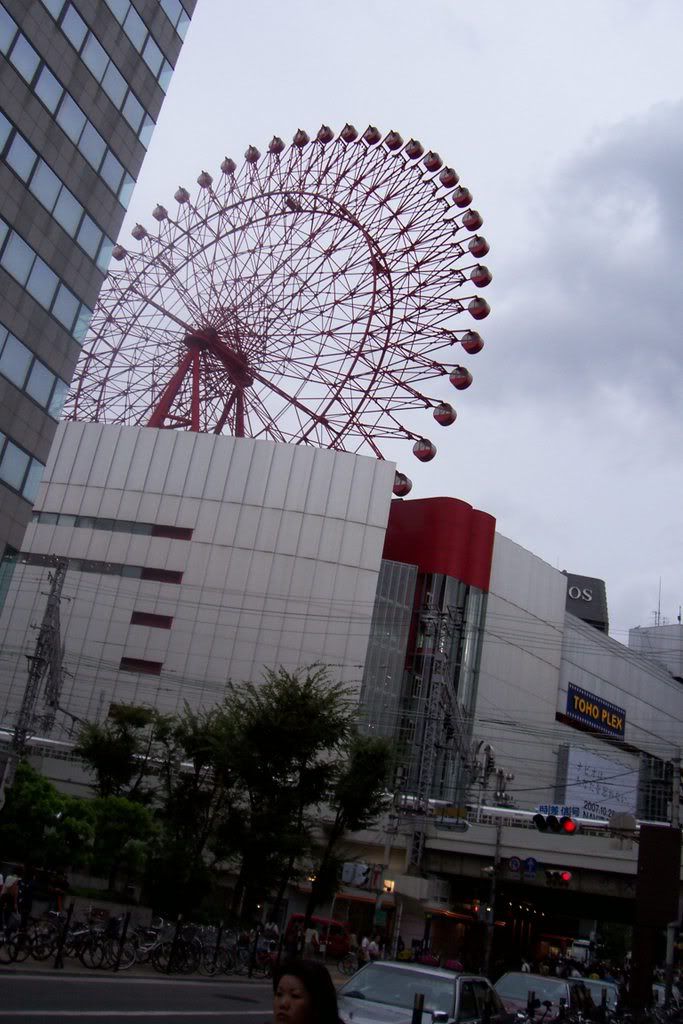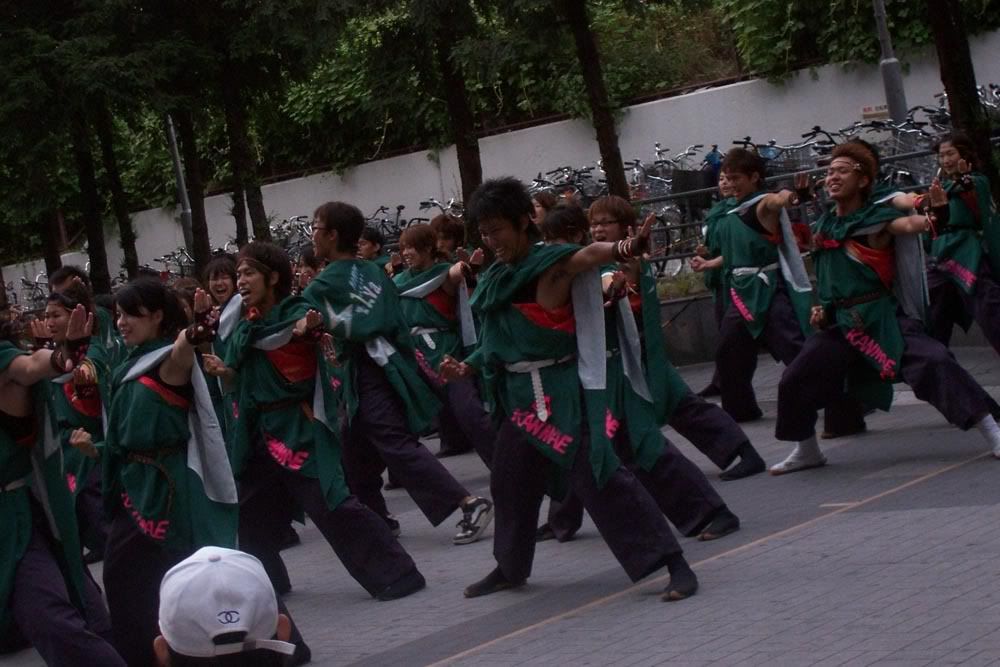
A few weeks ago at Kyobashi station in Osaka was sort of a preview of the Koiya Matsuri, which was taking place by Osaka Castle. Folk dance groups from different universities were performing at Kyobashi station, and they were also advertising for the festival at Osaka castle. A lot of people think it's rare to see young Japanese people taking part in traditional culture, but I think there is an exception to every rule. The group shown here is from Kansai Gaidai, and all of them obviously enjoyed what they were doing very much. It's nice to see that some of the younger generation still appreciates traditional culture.
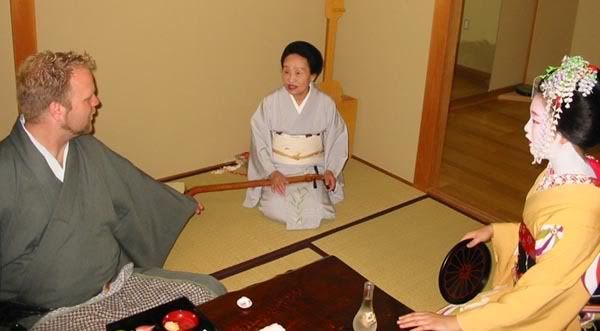
In Kyoto, tradition still holds strong. This photo was taken two years ago at an ocha-ya in Miyagawa-Cho, when I went to meet Miehina (in the yellow kimon), and her "oneesan," Mieko. At the time, Miehina was a seventeen year old maiko, a geisha apprentice. She had only been in training for six months. Now, she is about to become a full-fledged geisha and eventually she will inherit the house that she lives in.
